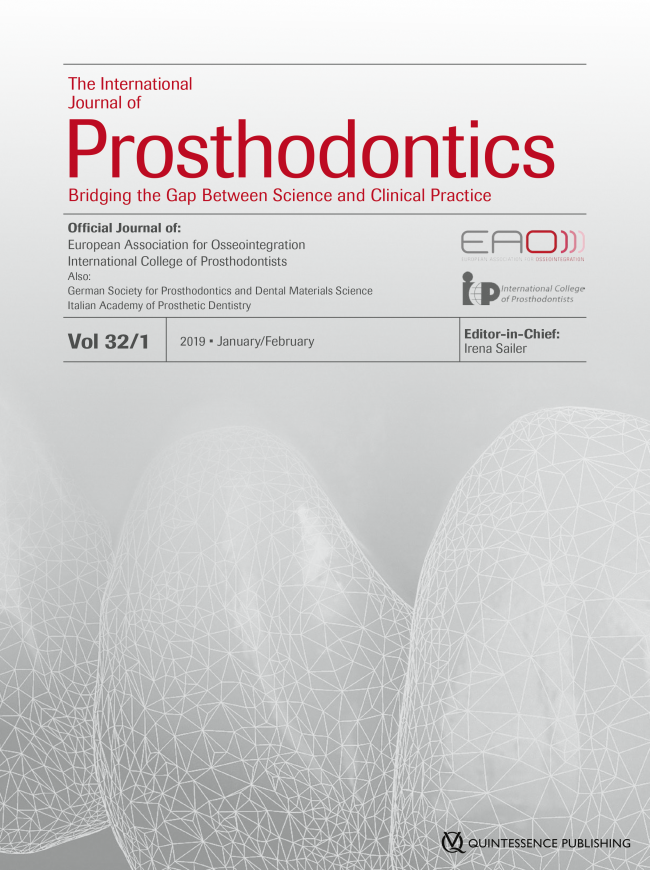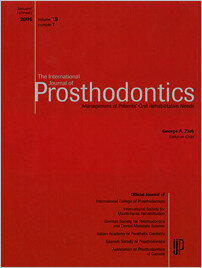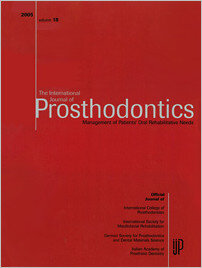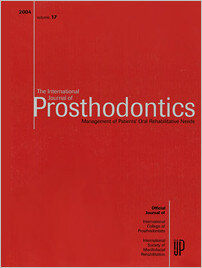PubMed ID (PMID): 16602355Pages 123-124, Language: EnglishZarb, George A.PubMed ID (PMID): 16602356Pages 126-128, Language: EnglishSmith, Gordon C. S. / Pell, Jill P.Objectives: To determine whether parachutes are effective in preventing major trauma related to gravitational challenge. Design Systematic review of randomised controlled trials.
Data Sources: Medline, Web of Science, Embase, and the Cochrane Library databases; appropriate internet sites and citation lists.
Study Selection: Studies showing the effects of using a parachute during free fall.
Main Outcome Measure: Death or major trauma, defined as an injury severity score > 15.
Results: We were unable to identify any randomised controlled trials of parachute intervention.
Conclusions: As with many interventions intended to prevent ill health, the effectiveness of parachutes has not been subjected to rigorous evaluation by using randomised controlled trials. Advocates of evidence based medicine have criticised the adoption of interventions evaluated by using only observational data. We think that everyone might benefit if the most radical protagonists of evidence based medicine organised and participated in a double blind, randomised, placebo controlled, crossover trial of the parachute.
PubMed ID (PMID): 16602357Pages 129, Language: EnglishEckert, StevenPubMed ID (PMID): 16602358Pages 130-132, Language: EnglishGoldstein, GaryPubMed ID (PMID): 16602359Pages 132-134, Language: EnglishBergendal, BirgittaPubMed ID (PMID): 16602360Pages 135-136, Language: EnglishPetridis, Haralampos P.PubMed ID (PMID): 16602361Pages 136-142, Language: EnglishDe Backer, Hein / Van Maele, Georges / De Moor, Nathalie / Van den Berghe, Linda / De Boever, JanPurpose: This study of full crowns investigated long-term survival in relationship to biologic and technical variables.
Materials and Methods: A total of 1,037 full crowns in 456 patients, made in an undergraduate university clinic, were evaluated over an 18-year period. All patients were offered a supportive maintenance program. Failures of full crowns were classified as irreversible (loss of full crown and/or tooth) or reversible (full crown intact after conservative treatment) complications and as biologic or technical/patient-related failures.
Results: The Kaplan-Meier survival rate after 18 years was 78%. No statistically significant differences were found between restorations in the maxilla and mandible (P = .150); between restorations on molars, premolars, and anterior teeth (P = .671); and between restorations on posts and cores compared to restorations without posts and cores (P = .602). For the surviving restorations, the improved plaque score over time was statistically significant (P = .001). Biologic failures (66.4%) resulting in removal were more common than technical and patient-related failures (33.6%). Caries was the most frequent reason for failure (irreversible complication).
Conclusion: The survival of full crowns made in an undergraduate university clinic during an 18-year period is comparable to the results published by university departments or private practitioners. Plaque scores and bleeding on probing were not directly related to failures. Occurrence of a previously reversible complication is a predicting factor for an irreversible complication. A reversible complication within the first 2 years will probably lead to an early irreversible complication.
PubMed ID (PMID): 16602362Pages 143-153, Language: EnglishDe Backer, Hein / Van Maele, Georges / DeMoor, Nathalie / Van den Berghe, Linda / De Boever, JanPurpose: This study of fixed partial dentures (FPDs) evaluated the long-term efficacy and determined frequencies and causes of failures.
Materials and Methods: A total of 322 FPDs in 193 patients, fabricated at an undergraduate university clinic, were evaluated over a 20-year period. All patients were invited to participate in a supportive maintenance program. Failures of the FPDs were divided into irreversible complications (loss of FPD/abutment) and reversible complications (FPD intact after conservative treatment) and into biologic and technical/patient-related failures.
Results: The Kaplan-Meier survival rate after 20 years was 66.2%. Statistically significant differences in survival rates were found between FPDs without post-and-core abutment teeth as compared to FPDs with at least one post-and-core abutment tooth (P = .002) and for vital abutments versus post-and-core abutments (P = .001), but significant differences were not found between restorations in the maxilla and mandible (P = .27). Caries and loss of retention were the main reasons for failure and accounted for 61% of the failures.
Conclusion: The survival of FPDs by undergraduate students at a university clinic during a 20-year period was comparable to the results published by university departments or general practitioners. Occurrence of a previously reversible complication is a predictive factor for an irreversible complication later on. A reversible complication within the first 2 years will probably lead to an early irreversible complication.
PubMed ID (PMID): 16602363Pages 154-161, Language: EnglishSelaimen, Caio M. P. / Jeronymo, José C. M. / Brilhante, Diego P. / Grossi, Márcio L.Purpose: We conducted this case-control study to determine the role of 2 neuropsychologic variables (sleep and depression) as possible risk indicators for the development of temporomandibular disorders (TMD).
Materials and Methods: Neuropsychologic tests, traditional signs and symptoms of TMD, and social and economic variables were analyzed. Seventy-two predominantly muscle-related TMD patients (Research Diagnostic Criteria for TMD groups Ia, Ib, and IIIa) and 30 age- and sex-matched pain-free controls were included in the population.
Results: Overall, TMD patients had statistically significantly higher sleep and depression scores on the Sleep Assessment Questionnaire and on the Brazilian Portuguese version of the Beck Depression Inventory, with odds ratios of 5 and 1.6, respectively. These results remained unchanged even after controlling for 8 confounders in the logistic regression analysis. Spontaneous pain and pain on palpation (grade 2 or higher) were also statistically significantly worse in TMD patients. In the forward-step logistic regression analysis, we also found that the combination of our best TMD predictors (ie, sleep, cigarettes, alcohol) had a better predictive value (percent agreement = 78.69%) than when the variables were analyzed alone.
Conclusion: Sleep and depression are considered important risk indicators for the development of TMD.
PubMed ID (PMID): 16602364Pages 162-163, Language: EnglishWalter, Michael H. / Wolf, Burkhard H. / Wolf, Annette E. / Boening, Klaus W.Purpose: The aim of the study was to evaluate the clinical performance of Procera Alumina AllCeram crowns (Nobel Biocare).
Materials and Methods: In 70 patients, 61 anterior and 46 posterior teeth were provided with single crowns and cemented with a glass-ionomer cement.
Results: Four patients were lost to follow-up. Six crowns had to be removed, all because of nonreparable fracture. At 6 years, the cumulative survival rate was 94.3% for all crowns, 96.7% for anterior crowns, and 91.3% for posterior crowns (survival = not removed). Most of the defects occurred within the first 1.5 years.
Conclusion: The findings indicate a good clinical prognosis of both anterior and posterior Procera Alumina crowns.
PubMed ID (PMID): 16602365Pages 164-170, Language: EnglishKrennmair, Gerald / Weinländer, Michael / Krainhöfner, Martin / Piehslinger, EvaPurpose: The aim of the present study was to evaluate implant survival, peri-implant conditions, and prosthodontic maintenance requirements for implant-supported mandibular overdentures in atrophic mandibles retained with ball or resilient telescopic crown attachments during a 3-year period.
Materials and Methods: Twenty-five patients with edentulous mandibles each received 2 Camlog root-form dental implants in the mandibular interforaminal (canine) region. The denture attachment system was chosen randomly; 13 patients received ball attachments and 12 patients received resilient telescopic crowns. Implant survival, implant mobility (Periotest values), and peri-implant conditions such as bone resorption, pocket depth, Plaque Index, Gingiva Index, Bleeding Index, and Calculus Index values were assessed for each implant. In addition, detailed prosthodontic maintenance was evaluated during the follow-up period and the 2 retention modalities were compared.
Results: There were no differences in implant survival, implant mobility (Periotest values), and peri-implant conditions between the 2 retention modalities. During the 3-year period significantly more complications/interventions for maintenance purposes were registered in the ball group (62 interventions) than in the telescopic crown group (26 interventions; P .01).
Conclusion: The results indicate that both ball attachments and resilient telescopic crowns used on isolated implants in the edentulous mandible are viable treatment options. Implant success and peri-implant conditions did not differ between ball attachments and telescopic crowns used as retention modalities for implant overdentures, but the frequency of technical complications was significantly higher with ball attachments than with resilient telescopic crowns.
PubMed ID (PMID): 16602366Pages 171-176, Language: EnglishKorduner, Eva-Karin / Söderfeldt, Björn / Kronström, Mats / Nilner, KristerPurpose: The purpose of this investigation was to obtain the opinions and assess the attitudes of Swedish general dental practitioners in private practice versus a public health care setting regarding management of patients with a shortened dental arch (SDA).
Materials and Methods: A questionnaire containing different statements regarding the SDA concept was sent to a random sample of 189 clinicians. Differences between male and female practitioners and between private practitioners (PPs) and those employed by the Public Dental Health Service (PDHS) were tested for statistical significance by the Student t test.
Results: The response rate was 54% (102 clinicians). Among the respondents, 62% were men and 38% were women. Fifty-six percent were PPs and 44% were employed by the PDHS. The results showed small differences in attitudes between various groups of practitioners but large individual variations. In general, Swedish general practitioners had a positive attitude toward the SDA concept with respect to oral function and oral comfort. They recognized few risks with a dentition lacking molar support, although female clinicians were more risk conscious. PPs expressed fewer advantages in using the SDA concept than PDHS practitioners with respect to the reduced risk for overtreatment, better patient economy, and the ability for older patients to keep their teeth.
Conclusion: The results from this questionnaire study indicate that, overall, Swedish general practitioners have an affirmative opinion toward the SDA concept.
PubMed ID (PMID): 16602367Pages 177-182, Language: EnglishCanabarro, Simone de Andrade / Shinkai, Rosemary Sadami AraiPurpose: Medial mandibular flexure (MMF) is the functional narrowing of the mandible during opening and protrusion movements, which may affect conventional or implant-supported prostheses. This study evaluated the association among MMF, maximum occlusal force (MOF), gender, weight, height, body mass index (BMI), and age in 80 dentate adult subjects (40 women, 40 men; age range 20 to 38 years).
Materials and Methods: Bilateral MOF was measured using a cross-arch force transducer placed in the first molar region. For MMF calculation, impressions of the mandibular occlusal surface were made with vinyl polysiloxane putty material in rest (R), maximum opening (O), and maximum protrusion (P). The impressions were scanned, and the images were processed using Adobe Photoshop software. Reference points were selected on the occlusal surface of the contralateral first molars, and the linear intermolar distance was measured using Image Tool software. MMF was calculated by subtracting the intermolar distance during opening or protrusion from the intermolar distance during rest.
Results: Mean values of MOF were 698.14 N for women and 1,009.48 N for men; MMF-O was 0.146 mm and MMF-P was 0.15 mm for the total sample. No correlation was found between MOF and MMF (r = 0.02 for MMF-O; r = 0.11 for MMF-P; P > .05) or between MMF and weight, height, BMI, or age. MOF was significantly associated (P .001) with weight (r = 0.509), height (r = 0.459), and BMI (r = 0.423), but not with age (r = 0.009).
Conclusion: These results suggest that MMF is not associated with MOF in this sample of dentate adults.
PubMed ID (PMID): 16602368Pages 183-184, Language: EnglishGu, Steven / Isidro, Mario / Deutsch, Allan S. / Musikant, Barry L.Purpose: This study evaluated the retention of dental post heads (No. 2 Flexi-Post) embedded in 5 core materials (1 automix resin composite, 2 hand-mixed resin composites, and 2 glass ionomers).
Materials and Methods: Samples were prepared by embedding post heads in 4.5-mm-thick disks of core material.
Results: The resin composite materials provided significantly more retention than the glass-ionomer-based materials. The post head retention of the automix resin composite was comparable to that of the hand-mixed resin composites.
Conclusion: Unlike the resin composite samples, all the glass-ionomer samples fractured during testing. This is an unacceptable condition for a clinically successful restoration.
PubMed ID (PMID): 16602369Pages 185-192, Language: EnglishScherrer, Susanne S. / Quinn, Janet B. / Quinn, George D. / Kelly, J. RobertPurpose: To educate dental academic staff and clinicians on the application of descriptive (qualitative) fractography for analyses of clinical and laboratory failures of brittle materials such as glass and ceramic.
Materials and Methods: The fracture surface topography of failed glass, glass fiber-reinforced composite, and ceramic restorations (Procera, Cerestore, In-Ceram, porcelain-fused-to-metal) was examined utilizing a scanning electron microscope. Replicas and original failed parts were scrutinized for classic fractographic features such as hackle, wake hackle, twist hackle, arrest lines, and mirrors.
Results: Failed surfaces of the veneering porcelain of ceramic and porcelain-fused-to-metal crowns exhibited hackle, wake hackle, twist hackle, arrest lines, and compression curl, which were produced by the interaction of the advancing crack with the microstructure of the material. Fracture surfaces of glass and glass fiber-reinforced composite showed additional features, such as velocity hackle and mirrors. The observed features were good indicators of the local direction of crack propagation and were used to trace the crack back to an initial starting area (the origin).
Conclusion: Examples of failure analysis in this study are intended to guide the researcher in using qualitative (descriptive) fractography as a tool for understanding the failure process in brittle restorative materials and also for assessing possible design inadequacies.
PubMed ID (PMID): 16602370Pages 193-194, Language: EnglishHedzelek, Wieslaw / Gajdus, PrzemyslawPurpose: The aim of the study was to compare the mechanical strength of palatal denture bases made from various plastic materials.
Materials and Methods: A form and models of an edentulous jaw (Frasaco) were used in the study. The denture bases were made from Zhermacryl H Plus and SR Ivocap Plus (both acrylic resins) and the polyurethane Microbase. Five samples were fabricated for each of the studied polymers. The fracture tests were carried out on a universal testing machine (Hounsfield H5KS).
Results: The highest fracture values were assessed on Ivocap specimens. The indicated differences between acrylic resin specimens made of Ivocap and Zhermacryl were not statistically significant. In turn, the differences shown between 2 acrylic resin palatal denture bases and the Microbase were statistically significant (P .05).
Conclusion: In this study, samples made from an alternative denture base polymer showed poorer mechanical strength as compared with those made of polymethylmethacrylate.
PubMed ID (PMID): 16602371Pages 195-201, Language: EnglishCampanha, Nara Hellen / Pavarina, Ana Cláudia / Giampaolo, Eunice Teresinha / Machado, Ana Lucia / Carlos, Iracilda Zeppone / Vergani, Carlos EduardoPurpose: To evaluate the influence of water bath and microwave postpolymerization treatments on the cytotoxicity of 6 hard reline acrylic resins.
Materials and Methods: The materials tested were Tokuso Rebase Fast (TR), Ufi Gel Hard (UGH), Duraliner II (D), Kooliner (K), New Truliner (NT), and Light Liner (LL). LL resin was additionally tested with an air-barrier coating (LLABC). Nine disks of each material (10 3 1 mm) were made and divided into 3 groups: group 1 (no postpolymerization treatment); group 2 (postpolymerization in microwave oven); group 3 (postpolymerization in water bath at 55°C for 10 minutes). L929 cells were cultured in 96-well plates and incubated for 24 hours in Eagle's medium. Eluates prepared from the disks or medium without disks (control) replaced the medium. Cytotoxicity was assessed by both dehydrogenase succinic activity (MTT) assay and incorporation of radioactive 3H-thymidine assay. Tests were carried out in quadruplicate and repeated twice. Differences between groups were determined by analysis of variance with Tukey multiple-comparison intervals (a = .05).
Results: For MTT assay, the postpolymerization treatments had no effect on the cytotoxicity of all materials (P > .05). For 3H-thymidine assay, the postpolymerization treatments significantly decreased the cytotoxicity of UGH (P .05). The cytotoxicity of K, NT, LL, and LLABC increased after microwave irradiation (P .05). TR, NT, and LLABC showed an increase in cytotoxicity after water bath (P .05).
Conclusion: When assessed by MTT assay, the cytotoxicity of the materials was not affected by postpolymerization treatments. 3H-Thymidine assay showed that the cytotoxicity of the resins was not improved by the postpolymerization treatments, with the exception of UGH.
PubMed ID (PMID): 16602372Pages 202-204, Language: EnglishSonugelen, Mehmet / Destan, Uhmut Iyiyapıcı / Lambrecht, Fatma Yurt / Öztürk, Berran / Karadeniz, SüleymanPurpose: To investigate the microbial adherence to the surfaces of a nonprecious metal alloy after plasma nitriding.
Materials and Methods: The plasma-nitriding process was performed to the surfaces of metals prepared from a nickel-chromium alloy. The microorganisms were labeled with technetium-99m. After the labeling procedure, 60 metal disks were treated with a microorganism for each use.
Results: The results revealed that the amount of adherence of all microorganisms on surfaces was changed by plasma-nitriding process; adherence decreased substantially (P .05) and the differences in plasma nitriding time were not significant (P > .05)
Conclusion: With the plasma-nitriding process, the surface properties of nonprecious metal alloys can be changed, leading to decreased microbial adherence.










